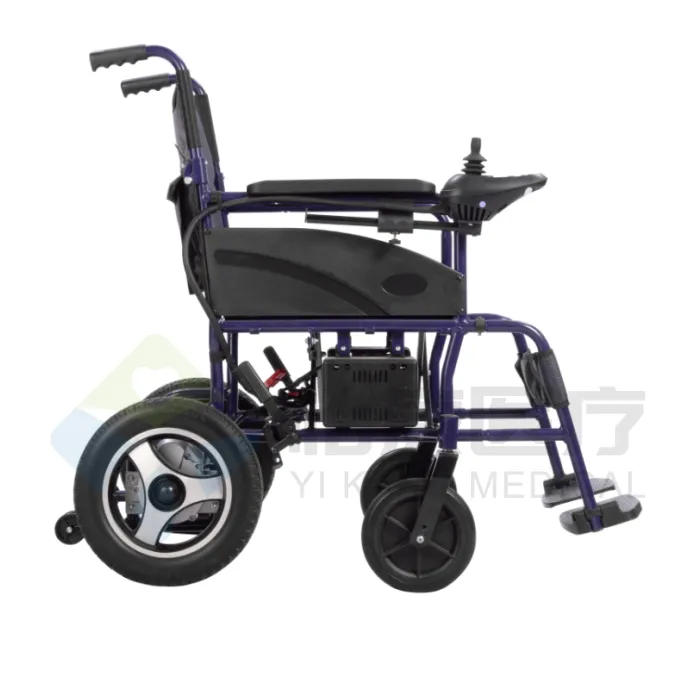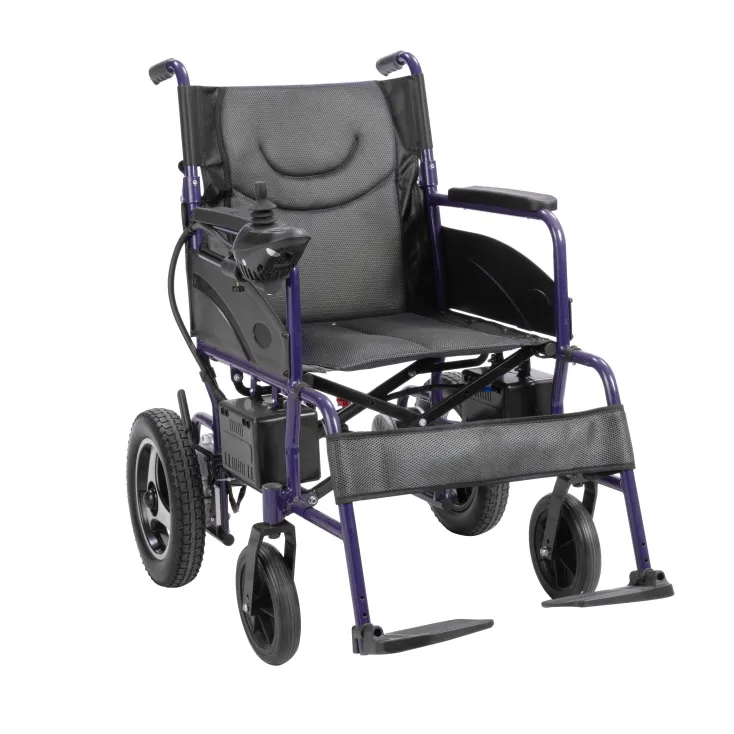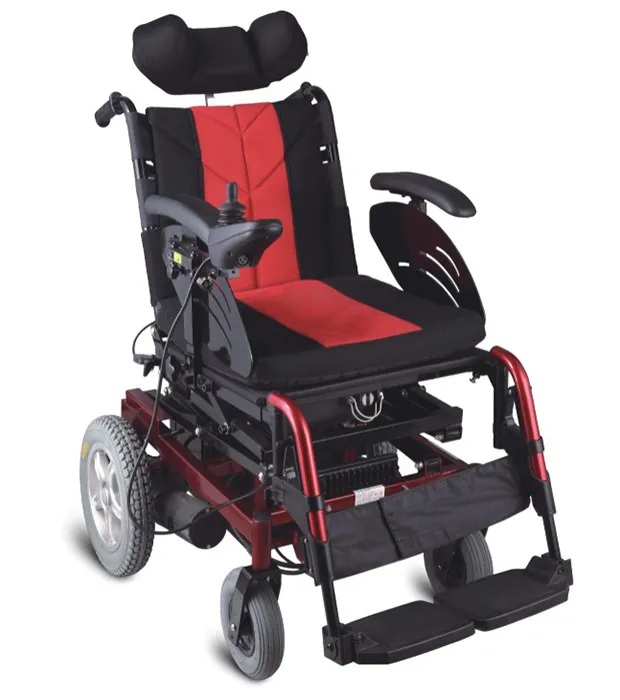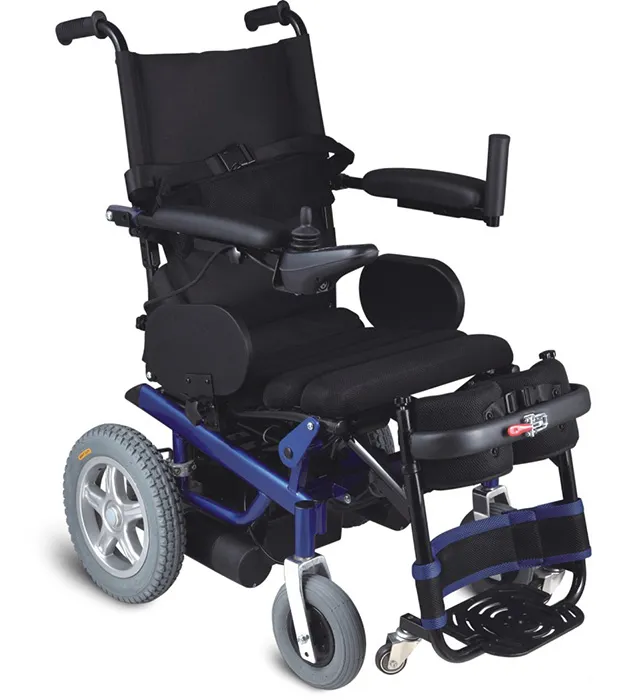Faced with walking difficulties caused by lower limb paralysis, muscle atrophy, neurological diseases, joint degeneration, etc., wheelchairs have become an indispensable auxiliary tool. In the field of wheelchairs, the popularity of electric wheel chairs is increasing.
But many people still have questions about the use of electric wheelchairs: Why do some people use electric wheel chairs? Is it suitable for all people with limited mobility? What are the specific functions and application scenarios of electric wheel chairs?
This article will focus on this issue and systematically answer the definition, applicable population, functional characteristics and application scenarios of electric wheel chairs, so as to answer the key proposition of "Why do some people use electric wheel chairs".

What is an electric wheelchair?
An electric wheelchair (Power Wheelchair or Motorized Wheelchair) is a mobility assistive device driven by electricity and controlled by a control device to control the direction and speed of travel. It mainly serves users with insufficient upper limb strength or complete disability to help them achieve basic personal mobility.
Electric wheel chairs are mainly composed of the following parts:
·Electric drive system: contains motor, speed change device, and electronic control module;
·Battery system: usually lithium battery or lead-acid battery, which provides continuous power for the device;
·Control system: the most common is the joystick, and some are also equipped with head control, foot control or suction control;
·Structural frame: the frame material is mostly aluminum alloy or carbon steel, with strong load-bearing capacity;
·Seat cushion and backrest system: provide a comfortable riding experience, and some also have electric lifting and tilting functions;
·Wheel and brake system: rear-drive or mid-drive layout, adapt to different road conditions.
Electric wheel chairs do not rely on human propulsion, and users can move independently without external help. They are the most important personal transportation tools for highly dependent users.

What are the advantages of electric wheelchairs?
To answer the question "Why do some people use electric wheel chairs?", we must understand their core functional advantages over traditional manual wheelchairs:
1. Achieve autonomous mobility
For patients with severe muscle weakness or upper limb dysfunction, using traditional manual wheelchairs will lead to the dilemma of "being able to sit but unable to move" due to the lack of propulsion. Electric wheelchairs can easily replace human power to complete various directions of travel through the electric drive system, allowing users to restore the ability to move freely, especially those who:
· Paralysis of both lower limbs;
· Partial or complete disability of the limbs;
· Muscle disorders caused by neurological diseases;
· Extreme physical weakness caused by chronic diseases.
2. Reduce the burden of care
Most traditional wheelchairs need to be pushed by a caregiver. Long-term use will increase the physical burden of caregivers, especially when used on slopes, long distances or outdoors. Electric wheelchairs can be controlled by the user, significantly reducing dependence on others and effectively reducing the intensity of care work.
3. Improve the quality of life and self-care ability
Being able to move freely is not only a physiological ability, but also directly affects a person's psychological state, social opportunities and self-esteem. The use of electric wheel chairs allows patients who may have been bedridden or dependent on others for a long time to:
· Go to the kitchen, balcony, and bathroom independently;
· Have the ability to go out shopping, seek medical treatment, and participate in social activities;
· Avoid emotional problems caused by isolation.
This is also an important reason why many users are willing to choose electric wheel chairs - it not only solves the problem of mobility, but also helps them regain control of their lives.

Who are the people who are suitable for electric wheelchairs?
Not all people with limited mobility need or are suitable for electric wheel chairs. However, there is a clear group of people who have become the core user group of electric wheelchairs because their physical condition limits the possibility of using traditional wheelchairs:
1. Quadriplegic patients
For example, high-level paraplegics (such as those with spinal cord injuries above T6) also have their upper limb functions affected and cannot push manual wheelchairs. Using electric wheelchairs can restore basic mobility, and even with the support of intelligent control systems, they can complete indoor life independently.
2. Patients with sequelae of cerebrovascular accidents
For those with hemiplegia, abnormal muscle tone, or limb coordination disorders caused by stroke, manual wheelchairs need to be operated in a balanced manner on both sides when used. These patients are difficult to handle, and electric wheelchairs provide a solution.
3. Patients with neuromuscular diseases
Diseases such as amyotrophic lateral sclerosis (ALS), progressive muscular dystrophy, and multiple sclerosis can lead to gradual muscle weakness or even disuse. In the early and middle stages of the disease, electric wheelchairs can maximize their independent activity time.
4. Patients with severe joint diseases
Such as advanced rheumatoid arthritis, femoral head necrosis, etc., although the patient is conscious, the pain is severe. Pushing the wheelchair or walking will cause great pain. Using an electric wheelchair can help complete daily activities without increasing the burden.
5. Elderly people with severe physical deficiency
Some elderly people do not have a clear disease, but due to old age and physical weakness, physical strength declines, respiratory function deteriorates, and it is difficult to support long-term pushing activities. Electric wheelchairs provide them with a reasonable way of activity, allowing them to participate in daily life more easily.
Use scenarios and environmental conditions of power wheelchairs
The functions of electric wheel chairs determine that they are suitable for the following scenarios:
1. Daily use at home
·Freely move between indoor kitchens, bedrooms, and bathrooms;
·High control sensitivity, not easy to collide with furniture;
·Some models have electric lifting and tilting functions, which are convenient for eating, reading or going to the toilet.
2. Community and urban environment
·Urban roads, community parks, supermarket shopping places;
·Adapt to slopes, elevators and other facilities;
·Power wheelchairs have strong endurance and can travel 10-25 kilometers on a single charge.
3. Medical institutions and rehabilitation centers
·Power wheelchairs are often used for patients with stable conditions but who need medium- and long-term rehabilitation;
·Medical staff can adjust the control system through programming to adapt to different rehabilitation needs.
4. Work or education places
·For disabled people with work or study needs, power wheelchairs can assist them in completing daily commuting;
·Most office spaces and campuses have adapted to barrier-free access requirements and support the use of power wheelchairs.
Operation and user experience of power wheelchairs
In addition to hardware functions, many people use power wheelchairs because of their convenient operation and user-friendly experience. Common control methods include:
·Hand-controlled joystick: commonly used for users with partially intact limb functions;
·Head control device: suitable for people with normal muscle strength above the neck and limb disability;
·Touch screen or voice control: integrated intelligent control module to improve convenience;
·Program path setting: some power wheelchairs can preset routes and cruise autonomously.
In addition, power wheelchairs are also compatible with a variety of auxiliary accessories, such as oxygen cylinder holders, infusion stands, reading trays, etc., to further meet the diverse life needs of users.

Comparative advantages of electric wheelchairs and other wheelchair equipment
To deeply understand "why some people use electric wheelchairs", it is also necessary to compare different wheelchair products horizontally:
Type | Is manpower required? | Can it be operated autonomously? | Applicable people | Main advantages |
| Manual wheelchair | Yes | Depends on the user's physical strength | People with intact upper limb function | Lightweight, cheap, suitable for short-term use |
| Transport wheelchair | Yes | No | Caregivers push the user | Portable, for short-distance transportation |
| Electric wheelchair | No | Yes | People with severe limb disabilities or very poor physical strength | High autonomy, freedom of movement, comfortable |
It can be seen that the core value of electric wheelchairs lies in "replacing manpower and restoring autonomy", which is the fundamental reason why many people choose it.
Is Yikang Medical a Factory or Trading Company?
Yikang Medical is a direct manufacturer with our own production facilities located in Foshan, a well-connected industrial city in China. Unlike trading companies, we manage every aspect of the production process in-house—from design and raw material sourcing to assembly and quality control. This ensures lower prices, better quality assurance, and more flexibility in order customization.

